Standing amidst the rolling hills of Tuscany, I found myself gazing up at San Gimignano’s medieval tower houses, a skyline so distinctive it’s often called the “Manhattan of the Middle Ages.” These ancient towers, once symbols of wealth and power for competing noble families, now create one of Italy’s most recognizable and photogenic landscapes.
What makes this hilltop town truly special is not just its architectural wonders but also its renowned Vernaccia wine, the first Italian white wine to receive DOC status.
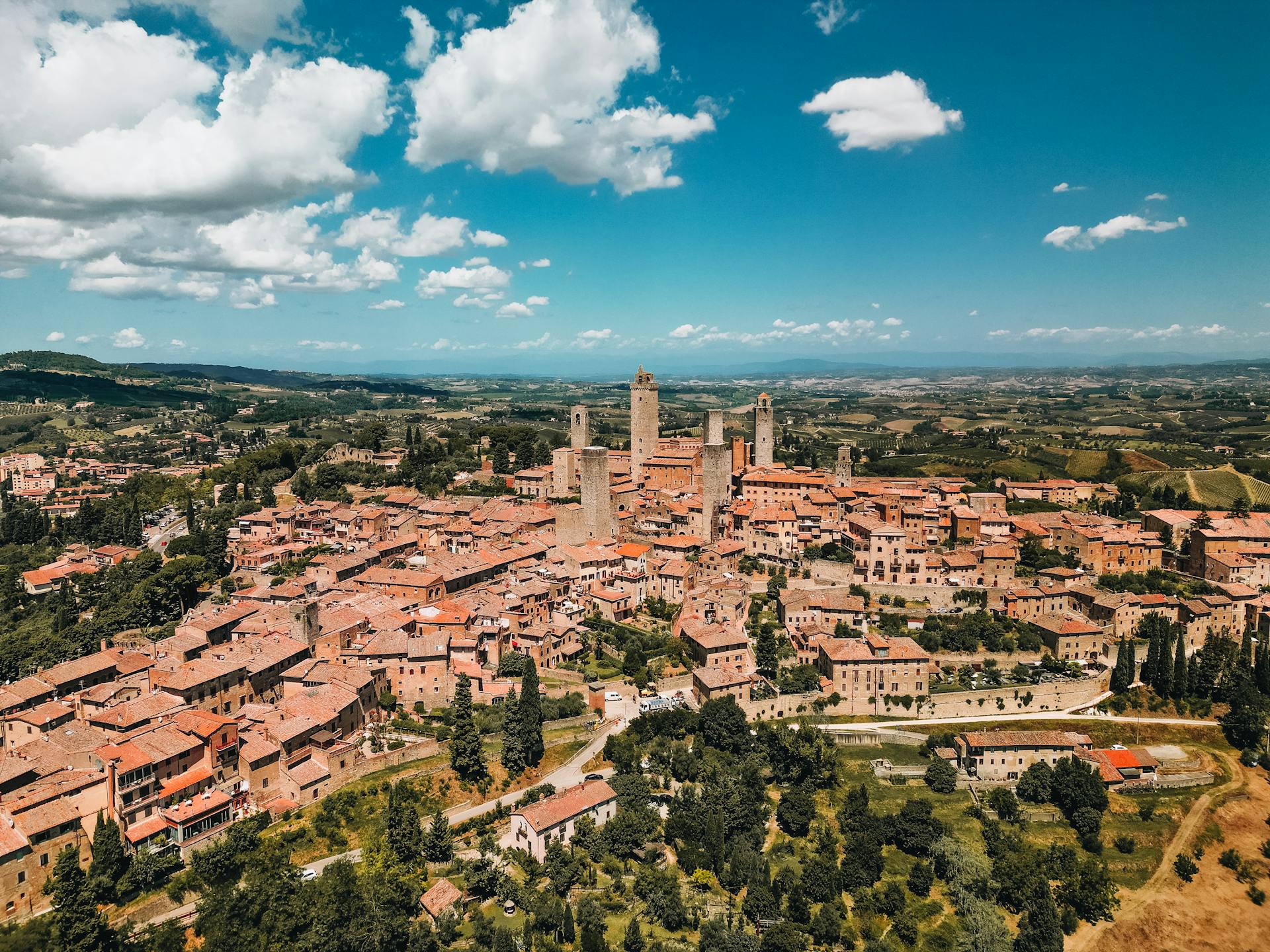
My visit to San Gimignano became complete when I paired tower-climbing with wine tasting at La Rocca, the town’s fortress that now serves as a center for experiencing the local Vernaccia. This crisp, fruity white wine has been produced in these hills since the 13th century and perfectly complements the town’s rich history.
The experience goes beyond just sampling—it’s about connecting with centuries of tradition while enjoying panoramic views of the Tuscan countryside.
Walking through the narrow medieval streets between tastings, I discovered that San Gimignano offers a perfect blend of cultural immersion and sensory pleasure. The town’s small size makes it ideal for a day trip from Florence, but don’t rush—the slow pace here is part of its charm, allowing you to savor both the architectural wonders and the distinctive local wine that has defined this region for centuries.
The Historical Allure of San Gimignano
San Gimignano captures the imagination with its striking medieval skyline and rich cultural heritage. Walking through its ancient streets feels like stepping back in time to an era when tower houses signaled wealth and powerful families competed for prominence.
Medieval Town and Tower Houses
I was completely mesmerized by San Gimignano’s famous medieval towers when I first spotted them rising from the Tuscan countryside. These tower houses date back to the 11th and 13th centuries, when rival noble families built increasingly taller structures as symbols of their wealth and power.
Originally, the town boasted an impressive 72 towers! Today, only 14 remain standing, yet they still create one of Italy’s most distinctive skylines. The height of these towers is remarkable – some reaching over 50 meters tall.
Walking the narrow stone streets between these ancient structures, I could almost feel the competitive spirit that drove families like the Ardinghelli and Salvucci to construct ever-taller monuments to their status.

UNESCO World Heritage Site
The historic center of San Gimignano earned its UNESCO World Heritage status in 1990, and for good reason. This perfectly preserved medieval town showcases what Tuscan life was like in the 13th and 14th centuries.
What makes it truly special is how intact the town planning, architecture, and artworks remain after all these centuries. UNESCO specifically recognized San Gimignano for its “exceptional testimony to medieval civilization.”
During my visit, I was struck by how the town maintains its authentic character despite its popularity. The terra cotta roofs, stone buildings, and fortified walls create a cohesive medieval atmosphere that’s increasingly rare in our modern world.
The protection afforded by UNESCO status has helped preserve this living museum for future generations to enjoy.
Piazza del Duomo and Torre Grossa
The heart of San Gimignano beats in Piazza del Duomo, the town’s main square surrounded by architectural treasures. Here stands the Collegiate Church with its stunning frescoes depicting scenes from the Old and New Testaments.

Torre Grossa, the tallest of San Gimignano’s surviving towers at 54 meters, dominates the square. I climbed its many steps to reach the top, where breathtaking panoramic views of the Tuscan landscape unfolded before me.
The piazza also features the Palazzo Comunale (Town Hall), now home to the Civic Museum with its impressive collection of Renaissance art. I was particularly moved by works from the Florentine and Sienese schools that adorn its walls.
This central gathering place continues to function as it has for centuries – as the social and cultural hub of town life.
Via Francigena: The Pilgrims’ Route
San Gimignano owes much of its historical prosperity to its position along the Via Francigena, the ancient pilgrimage route connecting Canterbury to Rome. As a key stopping point, the town flourished by catering to travelers making their spiritual journey.
Walking parts of this historic path, I followed in the footsteps of countless medieval pilgrims who sought rest and provisions here. The route brought wealth, cultural exchange, and artistic influences that shaped the town’s development.
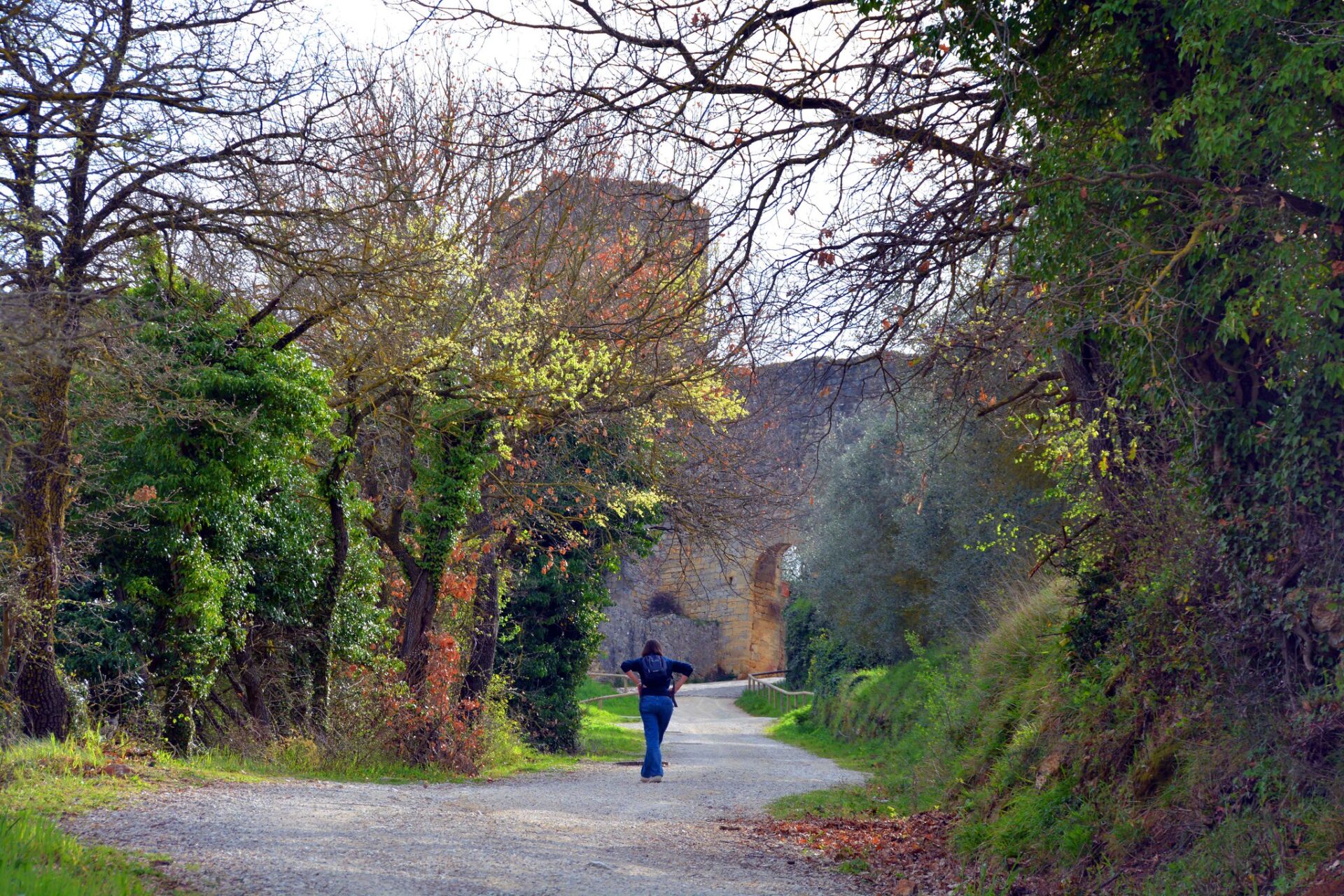
Image Source: Flickr
Many buildings along the route served as hospices and inns for weary travelers. Today, portions of the Via Francigena have been restored for modern pilgrims and hikers seeking to experience this historic journey.
The pilgrimage route’s importance to San Gimignano cannot be overstated – it was the lifeblood that allowed this small Tuscan town to achieve such remarkable cultural and architectural heights.
The Spirit of Tuscany: Vernaccia di San Gimignano
No visit to San Gimignano is complete without experiencing its liquid treasure. Vernaccia di San Gimignano represents the soul of Tuscan winemaking, a crisp white wine that has flowed through the region’s history for centuries.
Discovering the Vernaccia Grape
The Vernaccia grape is truly special, with a heritage dating back to the 13th century. I’ve learned during my visits that this indigenous variety thrives in the sandy, mineral-rich soils surrounding San Gimignano.
What makes Vernaccia unique is its crisp character and distinctive almond finish. Unlike many Italian white wines, it offers remarkable complexity and aging potential.
During my vineyard tours, winemakers often point out how the grape develops differently depending on its exact growing location. The best vineyards sit on hillsides at 200-300 meters elevation, where afternoon breezes protect the delicate fruit.
The grape produces relatively low yields, which contributes to its concentrated flavors and the wine’s premium status in Tuscan viticulture.
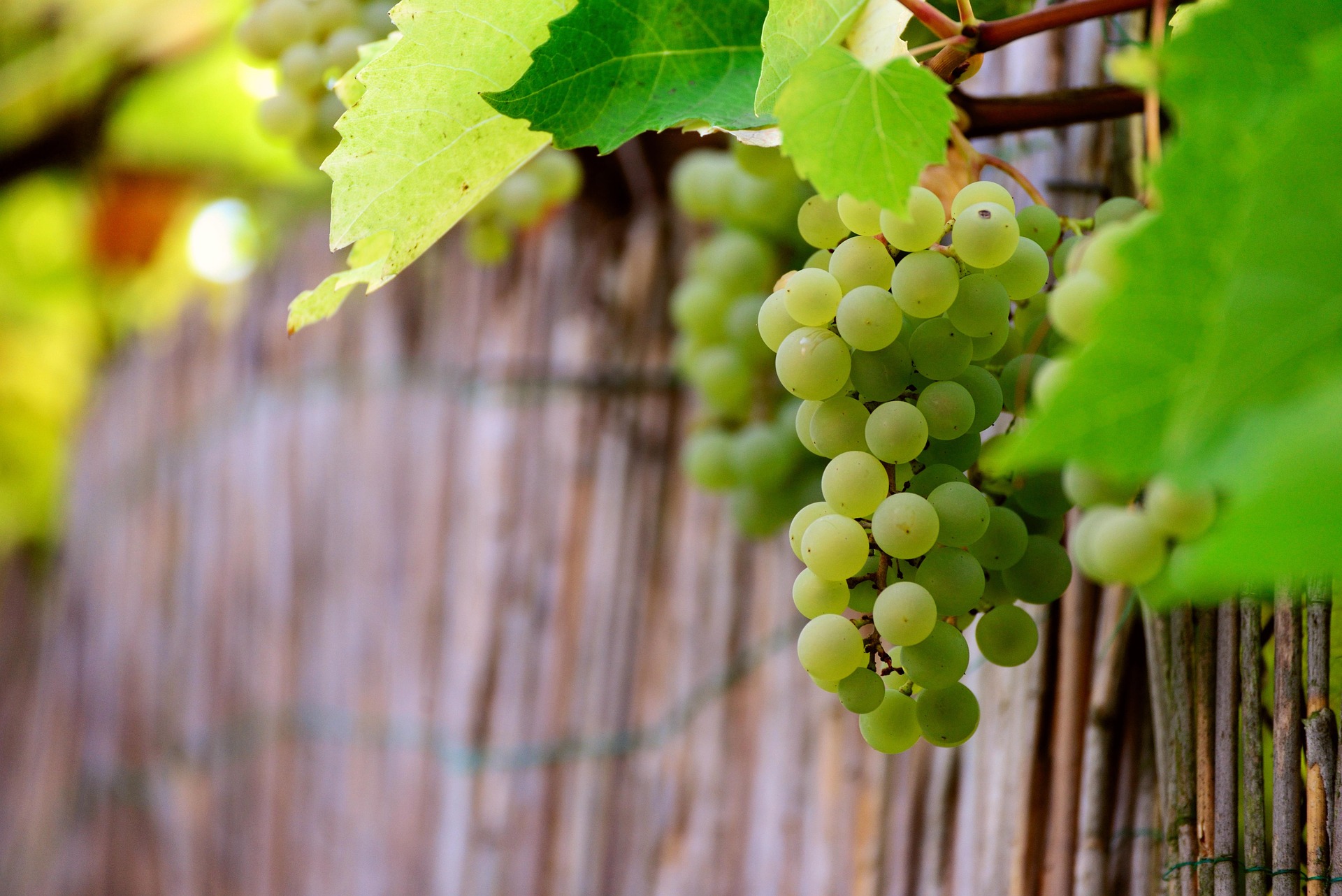
Winemaking Tradition and DOCG
Vernaccia di San Gimignano holds the distinction of being Italy’s very first DOC (Denominazione di Origine Controllata) white wine, awarded this status in 1966. Later, in 1993, it earned the prestigious DOCG classification.
The winemaking process typically involves gentle pressing of the grapes followed by temperature-controlled fermentation. Most producers use stainless steel tanks to preserve Vernaccia’s bright fruit characteristics and mineral notes.
Some of my favorite producers experiment with partial oak aging, adding subtle complexity without overwhelming the grape’s natural character.
The DOCG regulations require wines to contain at least 85% Vernaccia grapes, with strict yield limitations and quality controls. This ensures every bottle delivers the authentic taste of San Gimignano terroir.

The Delight of Vernaccia Riserva
For wine enthusiasts seeking something special, Vernaccia Riserva offers an elevated experience. These premium wines must age at least 11 months before release, with a minimum of 4 months in bottle.
I’ve found Riserva expressions develop fascinating complexity with notes of:
- Ripe stone fruits
- Toasted almonds
- Aromatic herbs
- Subtle honey
- Mineral undertones
The best Riservas can age beautifully for 5-7 years, evolving in the bottle. During my tastings, older vintages often surprise with their depth and golden color.
The Vernaccia di San Gimignano Wine Experience center at Rocca di Montestaffoli offers exceptional tastings. Their two-hour sessions taught me about the entire wine-producing area, not just individual producers.
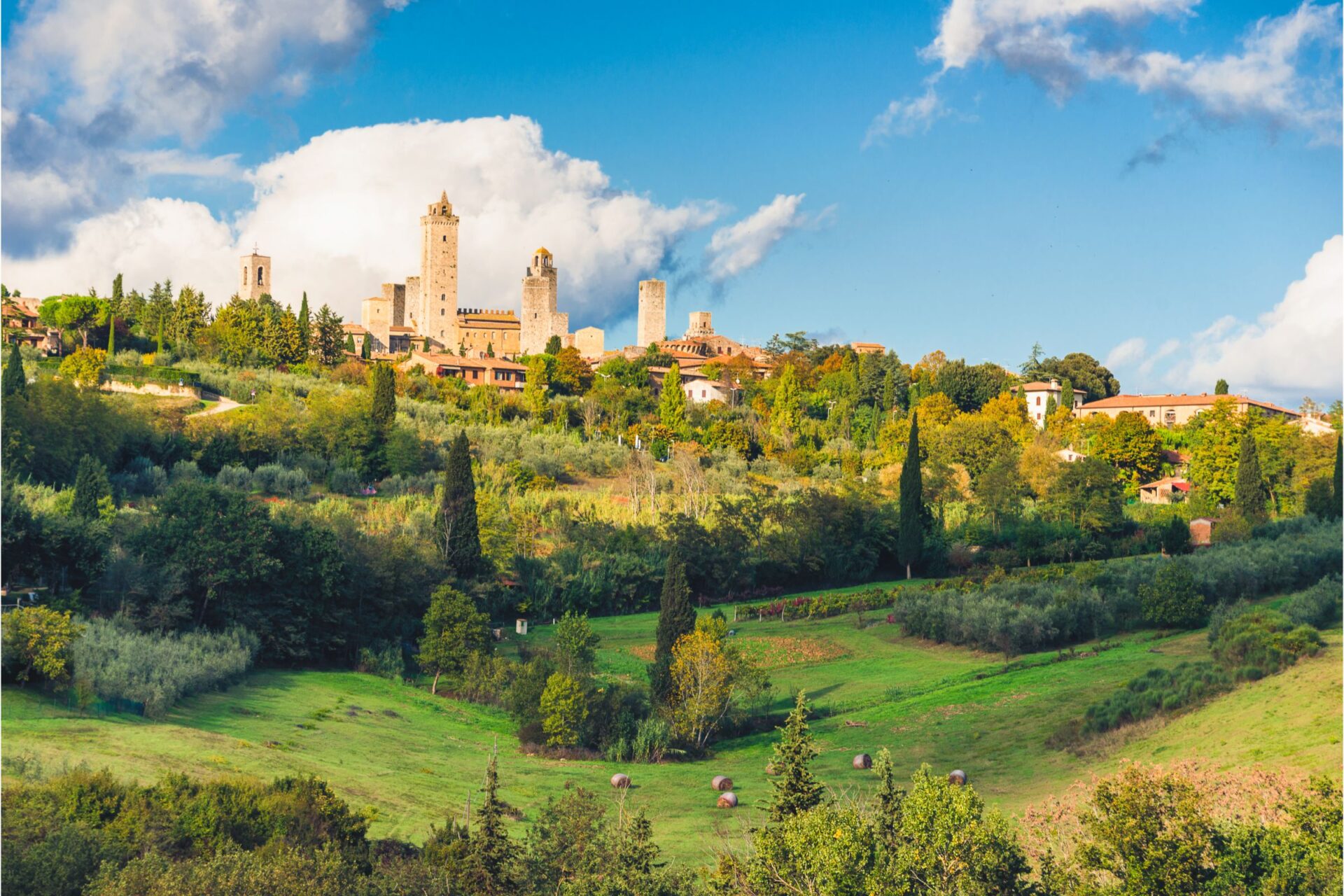
Savoring San Gimignano: The Culinary Scene
San Gimignano offers more than just stunning medieval towers and exceptional wines. The town’s food scene perfectly complements its historic charm with authentic flavors that tell the story of Tuscany’s rich culinary heritage.
Tuscan Dishes and Rustic Delights
When I visited San Gimignano, I discovered that Tuscan cuisine is beautifully simple yet incredibly flavorful. Local restaurants serve pici pasta, a thick hand-rolled spaghetti typically dressed with wild boar ragù or creamy pecorino cheese sauce.
The town’s kitchens proudly feature seasonal ingredients. During my spring visit, I enjoyed fresh fava beans and artichokes prepared with the region’s golden olive oil.
Don’t miss trying ribollita, a hearty bread soup made with vegetables and beans. It’s comfort food at its finest!
Many trattorias offer fixed-price lunch menus featuring:
- Crostini topped with chicken liver pâté
- Pappardelle pasta with local meat sauce
- Tuscan white beans with sage
- House wine (often Vernaccia)

Ristorante Dorando: A Gastronomic Landmark
Ristorante Dorando stands as my favorite culinary destination in San Gimignano. This family-run establishment has been serving traditional dishes for over three generations, perfecting recipes passed down through time.
The restaurant’s stone-walled interior creates a cozy atmosphere where I enjoyed their signature wild boar stew, slowly cooked with local herbs and Vernaccia wine.
Their pasta is made fresh daily. I watched in awe as the chef rolled out sheets of golden dough for their renowned ravioli filled with ricotta and spinach.
Reservations are essential, especially during summer months. Ask for a table on their terrace for views of the Tuscan countryside while dining.
Gelato and Olive Oil: Treats Beyond the Vine
San Gimignano’s world-champion gelato shop, Gelateria Dondoli, creates flavors you won’t find elsewhere. I tried their saffron gelato infused with pine nuts – a unique combination that won international awards.
The shop offers unusual flavors like Vernaccia wine sorbet and local herb-infused creations. There’s often a line, but the wait is worthwhile.
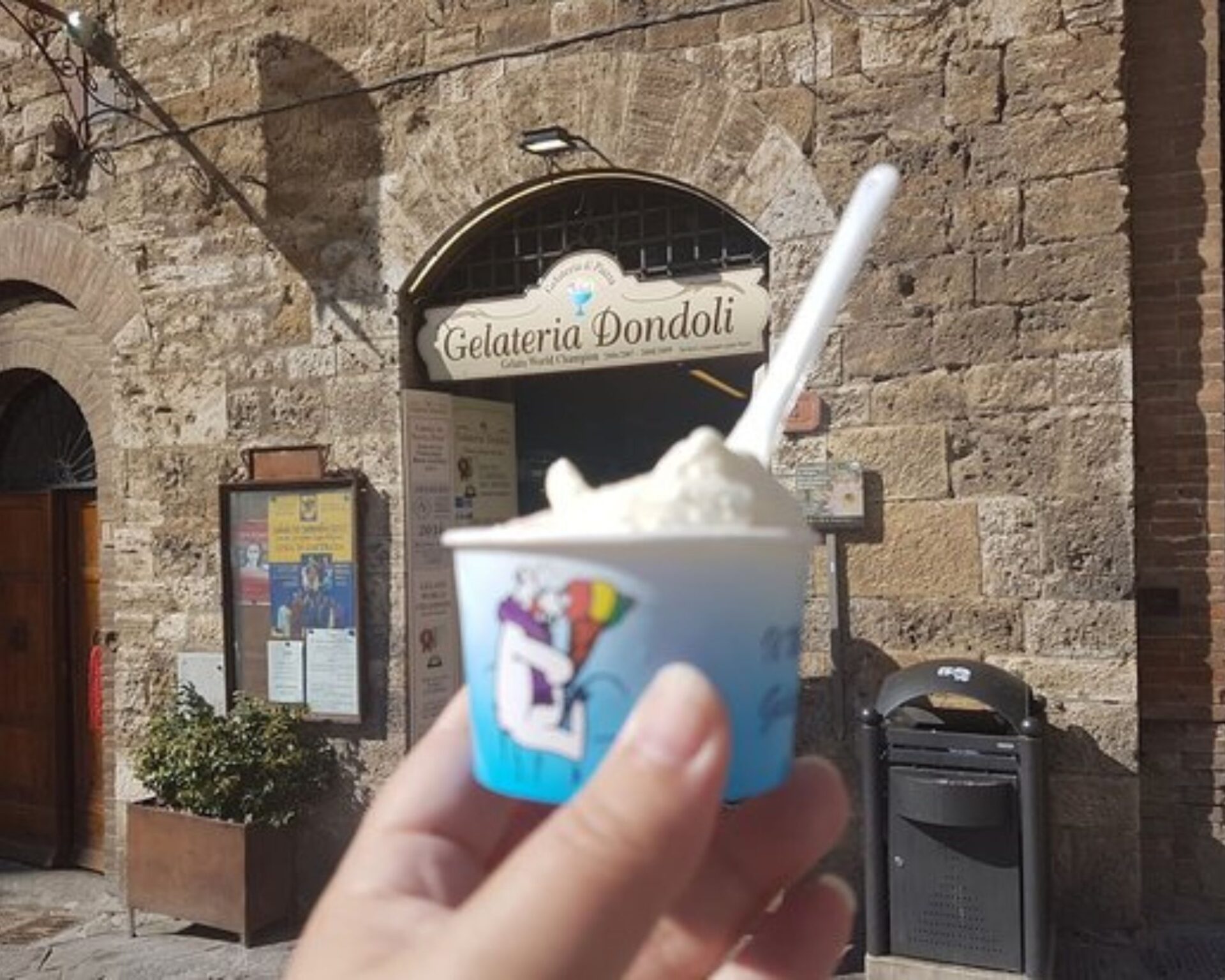
Image Source: Tripadvisor
Olive oil tasting provides another sensory experience. Many shops offer samples of the region’s peppery, emerald-green oils.
I visited a family farm just outside town where I learned to taste olive oil properly:
- Warm the small cup in your hands
- Inhale deeply to capture the grassy aroma
- Sip while drawing in air to enhance flavors
- Notice the peppery finish at the back of your throat
Immersive Wine Experiences in San Gimignano
San Gimignano offers some of the most authentic wine experiences in Tuscany. The town’s historic vineyards and dedication to quality create perfect opportunities for wine lovers to explore the famous Vernaccia and other local varieties.
Wine Tasting Tours
The vineyards surrounding San Gimignano offer stunning views and world-class wines. I recommend starting your wine journey with a guided tour of the scenic countryside where Vernaccia grapes flourish in the Tuscan sun.
Most tours last about 90 minutes to 2 hours, taking you through rows of carefully tended vines. Your guide will explain the unique growing conditions that give Vernaccia di San Gimignano its distinct character and DOCG status.
Many vineyards offer biodynamic tours, like Podere La Marronaia, where I enjoyed learning about natural farming methods. The tour typically ends at a panoramic spot with views of San Gimignano’s famous towers.
Tours range from €15-40 per person, with most including tastings of 3-5 wines. Booking ahead is essential, especially between April and October.

Meeting Wine Producers
Nothing compares to meeting the passionate people behind San Gimignano’s wines. Many family-run wineries welcome visitors to share their winemaking traditions firsthand.
I spent an afternoon with a third-generation winemaker who showed me their cellar dating back to the 1800s. The producer explained how they preserve traditional methods while incorporating modern techniques for quality.
During harvest season (September-October), some producers let visitors participate in grape picking. This hands-on experience connects you to the winemaking process from beginning to end.
Most producers speak English, though smaller family wineries might have limited language skills. The passion for their craft transcends any language barrier, making these meetings truly special.
Wine Tasting Experience with a Wine Expert
For a deeper understanding of Vernaccia di San Gimignano, I recommend a structured tasting led by a certified sommelier or wine expert.
La Rocca offers exceptional tasting experiences lasting about 75 minutes. Their experts guide you through proper tasting techniques while explaining the wine’s characteristics, history, and food pairings.
During my visit, I learned to identify Vernaccia’s typical almond finish and mineral qualities. The expert taught our small group how to evaluate color, aroma, and taste while sharing stories about the region’s winemaking heritage.
Many tastings include local specialties like Tuscan cheese, olive oil, and crostini. This pairing experience enhances the wine’s flavors and showcases the region’s culinary traditions.
The best tastings happen in historic settings near Piazza della Cisterna, combining wine appreciation with San Gimignano’s medieval atmosphere.

Exploring the Tuscan Landscape and Beyond
San Gimignano serves as an ideal base for discovering the breathtaking Tuscan countryside. The rolling hills, cypress-lined roads, and vineyard-covered landscapes create perfect day trip opportunities to nearby destinations that shouldn’t be missed.
The Chianti Region and Montepulciano
The Chianti wine region is a must-visit when staying in San Gimignano. I recommend hiring a private driver to navigate the winding roads through this famous wine territory.
The terroir here creates distinct flavors in the local wines that differ from San Gimignano’s Vernaccia. During my last visit, I discovered small family-run wineries offering intimate tastings. Many provide tours of their cellars where you can learn about traditional winemaking methods.
Montepulciano, about an hour’s drive away, offers another remarkable wine experience. The town sits dramatically atop a limestone ridge and is famous for its Vino Nobile di Montepulciano.
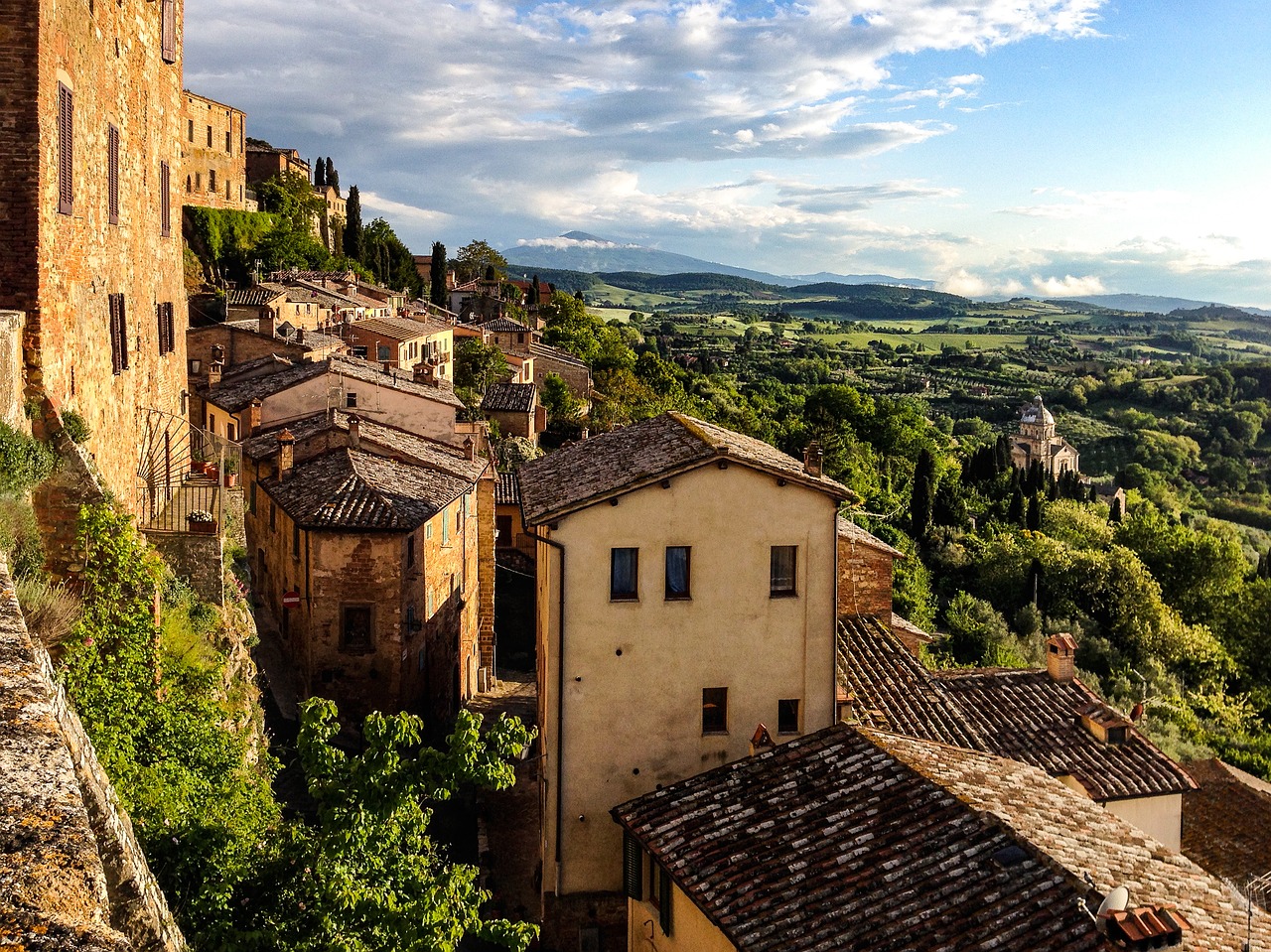
Best Wineries to Visit:
- Castello di Brolio (Chianti)
- Avignonesi (Montepulciano)
- Boscarelli (Montepulciano)
Day Trips to Pisa and Siena
Pisa is just 60 minutes from San Gimignano and makes for an easy morning excursion. Most visitors come for the famous Leaning Tower, but I found the entire Campo dei Miracoli complex truly impressive.
Plan to arrive early before the tour buses. After seeing the tower, wander the less-crowded streets. There, you’ll find charming cafés and local life.
Siena captivated me with its medieval charm and the stunning shell-shaped Piazza del Campo. The striped Duomo contains incredible artistic treasures that rival Florence’s.
I recommend timing your visit to Siena around lunch. Then, you can enjoy authentic Tuscan cuisine in one of the restaurants bordering the main square. The traditional pici pasta with wild boar ragù pairs perfectly with a local Chianti.

